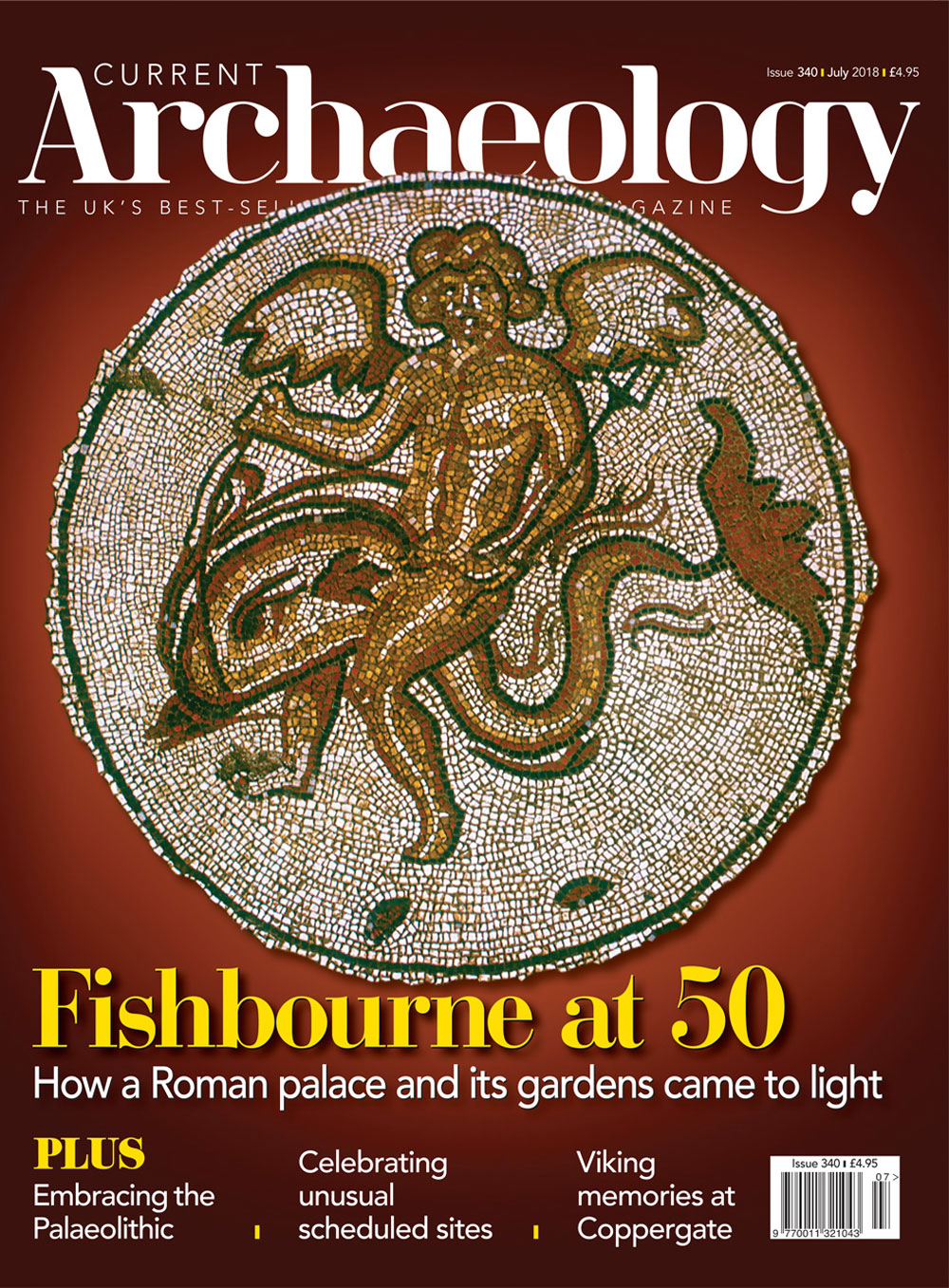In the recent hot weather, the trees that line many of our urban streets offer welcome shade – but when these leafy avenues were first introduced to Britain they were highly controversial. We trace the progress and pitfalls of this movement from its 19th-century roots to the present day.
Greenery was also a key feature of Fishbourne Roman palace; in 1961-1969, excavations uncovered grand formal gardens alongside an astonishing range of Roman buildings. Fifty years after the site museum opened, we explore how understanding of the palace has evolved, and share memories from Barry Cunliffe, who led the dig, and David Baker, who captured it all on film.
Fishbourne is now a scheduled ancient monument, protection that today safeguards around 20,000 sites in England. We take a tour of ten of the most unusual locations that have recently come under this legislation’s scope.
And now for something completely different: while archaeology is invaluable for understanding the past, it can also inform our present and help guide our future. Gustav Milne is taking a thought-provoking look at how, physically and psychologically, we are still very similar to our Palaeolithic predecessors, and how embracing this could benefit us all.
Moving into the not-so-deep past, we revisit the Coppergate dig that uncovered so much about Viking-age York. York Archaeological Trust is keen to hear recollections of the 1976-1981 excavations. We share some of the highlights gathered so far.
Finally, last issue we asked what advice you would give to young people interested in archaeology. This month, as the students of 2019 weigh up university options, we discuss what makes it a great subject to study at degree level.
Carly Hilts
IN THIS ISSUE:/n
FEATURES/n
ROOTED IN HISTORY/n
Digging into the development of Britain’s street trees
The Victorian street-trees movement aimed to help beautify streets and banish disease, but it faced many opponents. We trace the origins of this initiative, and learn how, even in greener times, it remains controversial.
FISHBOURNE AT 50/n
•Celebrating half a century at a unique Roman palace• Remembering Fishbourne
Half a century after Fishbourne Roman Palace Museum – featuring the remains of the largest domestic Roman building north of the Alps – opened to the public, we look back on the extraordinary excavations that uncovered the site, and reflect on how understanding has evolved.
CELEBRATING SCHEDULING/n
A history written in stone
When the Ancient Monuments Protection Act was first instated in 1882, only 22 English sites made the first ‘Schedule’ for special protection. Today, scheduling safeguards just under 20,000 monuments – we explore some of the most unusual recently added to the scheme.
BACK TO BASICS/n
Uncivilising civilisation
Humans appeared c.300,000 years ago, but we only left our Palaeolithic past behind us and began a more settled lifestyle c.10,000 years ago, leaving us little time to adapt to urbanisation. How does this affect us today?
COPPERGATE MEMORIES/n
Remembering York’s revolutionary Viking dig
An ongoing oral history project is collecting recollections of the Coppergate excavations in York (1976-1981). We share the reminiscences of some of those involved.
NEWS/n
Burning questions at Dun Deardail; Highland housing in the Mesolithic; Never a dull moment: the lives of Early Bronze Age axes;Bronze Age barrow discovered in Cornwall; Reading the painting on the wall; Science notes; Deciphering the Anglo-Saxon diet; Finds tray
REGULARS/n
Comment
Joe Flatman excavates theCAarchive
Context
Grand designs: Canons Ashby, Northamptonshire
Reviews
The Hidden Bones;Writing and Power in the Roman World: literacies and material culture; Cave Canem: animals and Roman society; Along Prehistoric Lines: Neolithic, Iron Age, and Romano-British activity at the former MOD headquarters, Durrington, Wiltshire; Roman Recording Keeping and Communications; 50 finds from Staffordshire
Exhibition
Settlers: genetics, geography, and the peopling of Britainat the Oxford University Museum of Natural History
Calendar
Our selection of exhibitions and events
Opinion
Think differently: think Archaeology!
Sherds
Chris Catling’s irreverent take onheritage issues
Odd Socs
British Arachnological Society

